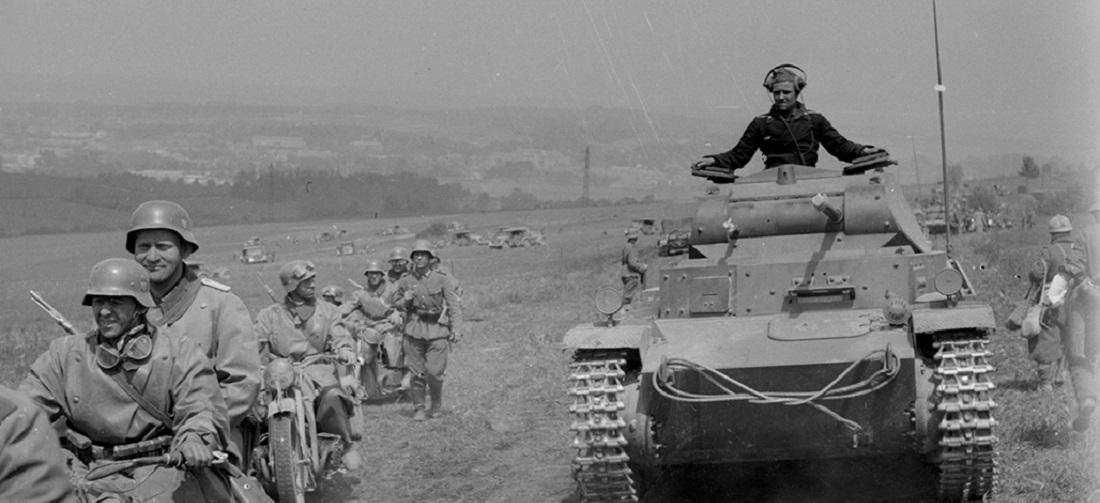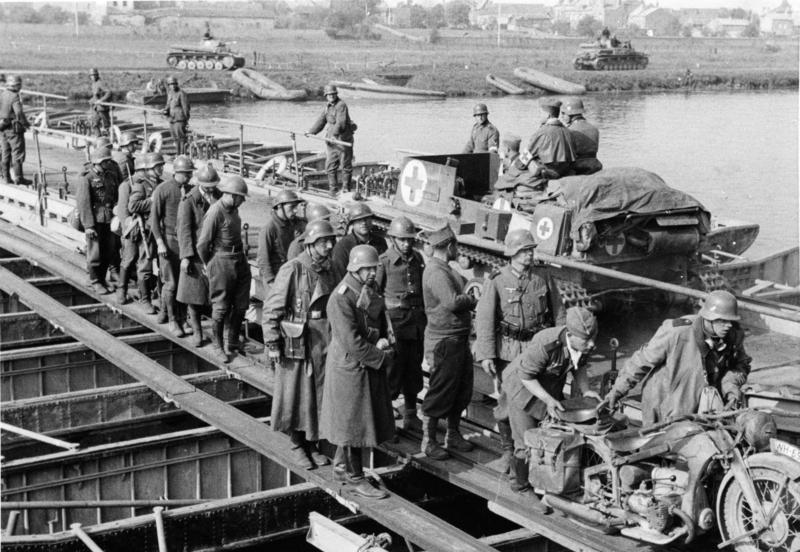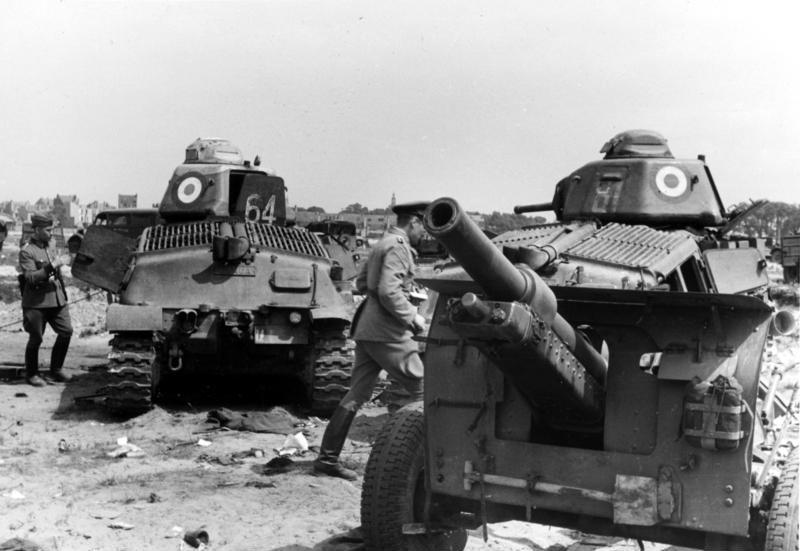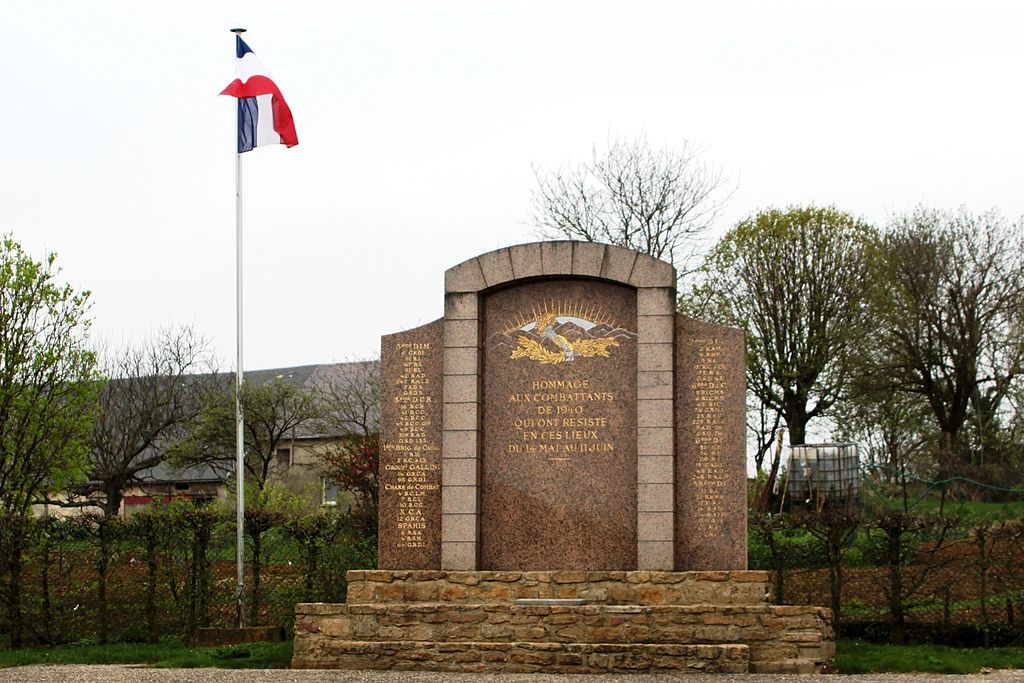The Battle of Stonne-Oches
Sous-titre
13 May-10 June 1940

General Guderian’s XIX Army Corps, which attacked Sedan, comprised three divisions, the 1st, 2nd and 10th Panzer Divisions, with a total of approximately 1 000 tanks. Facing them was the French Second Army, under General Huntziger, whose command post was at Senuc.
The first clash took place on the banks of the Meuse. The French 55th Infantry Division, a division of reservists, struggled to withstand the shock of the Stuka air strikes. The German troops made rapid progress. The 71st Infantry Division, also made up of reservists, was sent in as reinforcement, but was unable to contain the enemy attack. The Germans crossed the Meuse on 13 May.
A French motorised division – the 3rd DIM – was engaged in an attempt to plug the gaps and contain the German advance.
Meanwhile, the 3rd Armoured Division, with 126 tanks, comprised of the 319th Artillery Regiment and 16th Chasseurs Battalion, received orders to reinforce the counter-attack, just when it was reorganising its tank numbers in conjunction with the ill-equipped 1st and 2nd Armoured Divisions.
The three regiments comprising the 3rd DIM (67th, 91st and 51st) moved with the artillery (42nd and 242nd regiments) and the reconnaissance group (6th GRDI).
On 14 May, the 3rd Armoured Division was given orders to counter-attack and drive the German forces back across the Meuse. It was reinforced by two tank battalions from the 503rd Tank Battalion Group (GBC), along with the 7th and 4th battalions (80 tanks equipped with 37mm guns).
The first clash was at Bulson-Chehery. German tanks of the 1st Panzer Division, brought in as reinforcements, were initially held off. But their superior armoury and weaponry meant that they inflicted heavy losses on the 7th Battalion, which had to retreat after two hours of fighting. The other Gendarmerie Tank Battalions (41st and 42nd, 49th and 45th), poised to enter the fray, received no orders to do so.

Elements of the 1st Panzer Regiment, 1st Panzer Division and prisoners of war cross a pontoon bridge on the Meuse at Floing, 14 May 1940.
© German Federal Archives
On 15 May, the German forces (the Grossdeutschland Infantry Regiment and 10th Panzer Division) attempted to force their way through the Stonne-Le Mont Dieu-Le Mont Darnion line.
Stonne was the scene of fierce fighting: the Germans took the town five times before being forced to retreat.
The 67th Infantry Regiment (67th RI) was in turn committed, supported by the 49th Tank Battalion, equipped with 32-tonne heavy tanks armed with two guns (47 and 75 mm).
On 16 May, Stonne was retaken by the 41st Heavy Tank Battalion, the 45th Gendarmie Tank Battalion, the artillery and the newly arrived 51st RI.
Suffering heavy losses, the German troops could advance no further.
On 17 May, fighting raged in Stonne and, from 18 to 23 May, successive attacks took place.
On 23 May, there was fighting in Tannay, fiercely defended by the light infantry of the 16th Battalion of Chasseurs à Pied.
On 24 May, violent fighting took place in Tannay-aux-Cendrières, where the 7th Company, 67th RI, completely surrounded, held out until the evening.
By bringing in the Spahis, the German attack was able to be contained, while the tanks of the 42nd Battalion defended Les Grandes Armoises. Yet because the German troops had made headway along the Canal des Ardennes, at Tannay the line of resistance had to be readjusted, being established on the line Petites Armoises-Sy-Oches.
On 25 May, the 3rd DIM was relieved by the 35th Infantry Division and 123rd RI, who took up their positions on the line. Meanwhile, the 6th Colonial Infantry Division held the forest between Stonne, Oches and Sommauthe.
The Spahis, whose command post was at Harricourt, defended the positions, alongside the 76th Reconnaissance Group. Having received reinforcements from the 36th RI and 22nd Reconnaissance Group, they contained the incessant attacks on Oches, a strategic site that formed an advance sentinel towards the important crossroads of Saint-Pierremont. It also afforded a position that overlooked the entire French rearguard.

French tanks captured by German troops in May 1940. © German Federal Archives
From 25 May to 9 June, daily “coup de main” attacks kept the troops on tenterhooks, under deadly artillery fire.
Losses were heavy since the outbreak of the fighting (nearly half of the troops committed).
On 9 June, the Germans launched a massive, wide-reaching attack, supported by armoured elements. The position at Oches was partly overrun, but ultimately retaken by the French after fierce fighting. That day proved to be particularly bloody.
The 36th RI was relieved by the 119th.
On 10 June, a fresh German attack was halted by means of artillery fire and the resistance put up by the troops on the ground.
All that remained of the village was a heap of blackened stones in a barren landscape of charred, mutilated trees. The enemy requested a truce to remove its dead and wounded, which it was duly granted.
But owing to the threat of being surrounded from the south, at 11 pm that day, the order was given to retreat.
The Battle of Stonne-Oches had lasted from 14 May to 10 June. Losses on both sides were considerable.
In four weeks, the Germans had advanced just three kilometres.
MINARM/SGA/DPMA


